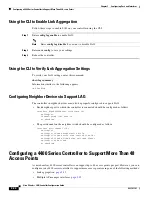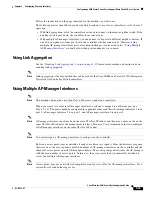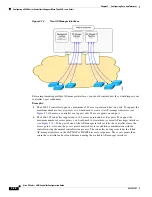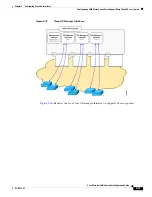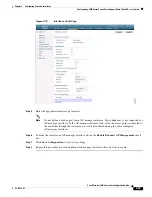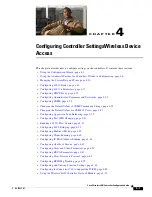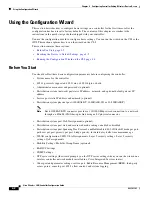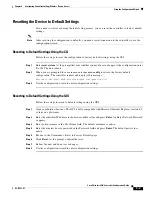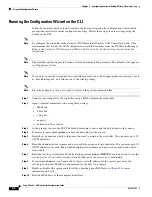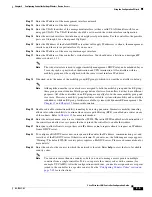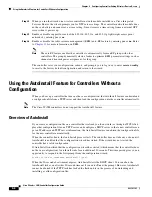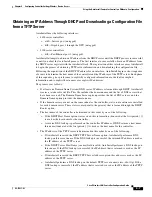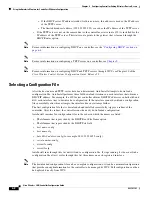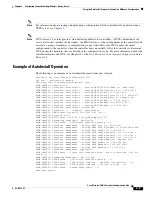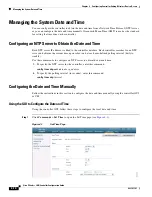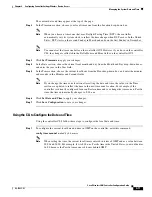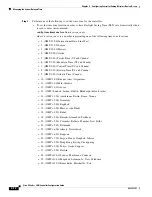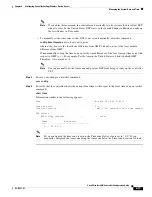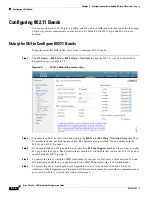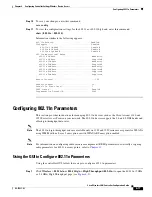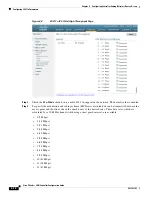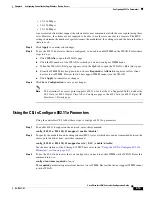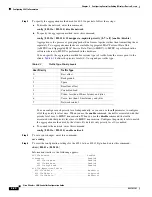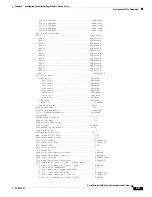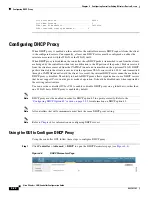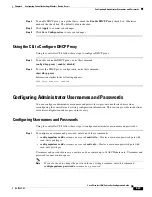
4-8
Cisco Wireless LAN Controller Configuration Guide
OL-17037-01
Chapter 4 Configuring Controller SettingsWireless Device Access
Using the AutoInstall Feature for Controllers Without a Configuration
–
If the DHCP server IP address (siaddr) field is non-zero, this address is used as the IP address
of the TFTP server.
–
The limited broadcast address (255.255.255.255) is used as the IP address of the TFTP server.
•
If the TFTP server is not on the same subnet as the controller, a static route (/32) is installed for the
IP address of the TFTP server. This static route points to the gateway that is learned through the
DHCP Router option.
Note
For more information on configuring DHCP on a controller, see the
Note
For more information on configuring a TFTP server on a controller, see
.
Note
For more information on configuring DHCP and TFTP servers through WCS, see Chapter 10 of the
Cisco Wireless Control System Configuration Guide, Release 5.2.
Selecting a Configuration File
After the host name and TFTP server have been determined, AutoInstall attempts to download a
configuration file. AutoInstall performs three full download iterations on each interface that obtains a
DHCP IP address. For example, if a 4400 series controller obtains DHCP IP addresses on both eth0 and
dtl0, each interface tries to download a configuration. If the interface cannot download a configuration
file successfully after three attempts, the interface does not attempt further.
The first configuration file that is downloaded and installed successfully triggers a reboot of the
controller. After the reboot, the controller runs the newly downloaded configuration.
AutoInstall searches for configuration files in the order in which the names are listed:
•
The filename that is provided by the DHCP Boot File Name option
•
The filename that is provided by the DHCP File field
•
host name
-confg
•
host name
.cfg
•
base MAC addres
s-confg (for example, 0011.2233.4455-confg)
•
serial number
-confg
•
ciscowlc-confg
•
ciscowlc.cfg
AutoInstall runs through this list until it finds a configuration file. It stops running if it does not find a
configuration file after it cycles through this list three times on each registered interface.
Note
The downloaded configuration file can be a complete configuration, or it can be a minimal configuration
that provides enough information for the controller to be managed by WCS. Full configuration can then
be deployed directly from WCS.

